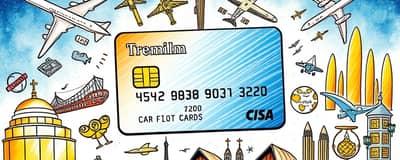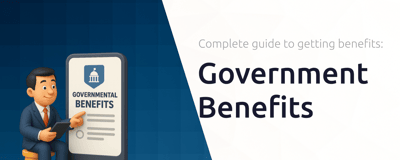In today’s dynamic financial landscape, many consumers juggle several credit cards to optimize rewards, improve credit health, and simplify expense tracking. However, without a clear plan, having multiple lines of credit can become daunting.
When approached thoughtfully, credit cards can transform from mere purchase tools into powerful instruments for achieving long-term financial goals. With the right mindset, you can turn potential confusion into strategic opportunities for growth and peace of mind.
Why Manage Multiple Cards?
For the average American, owning several credit cards has become commonplace. When managed properly, tracking spending categories becomes effortless and helps individuals maintain tighter control over their monthly expenses. Dedicated cards for travel, groceries, utilities, and online shopping can transform chaotic statements into clear, category-driven reports.
Moreover, separating purchases across cards enhances fraud detection, as anomalies stand out more prominently when expenses are segregated by type. This approach complements the built-in consumer protections that come with credit card use, fostering a more secure financial profile.
Advantages of Multiple Credit Cards
Owning more than one credit card offers a variety of benefits, from rewards optimization to credit score enhancement. Key advantages include:
- Improved credit utilization across accounts, since more available credit can lower your overall utilization ratio and boost your FICO score.
- Access to a wide array of introductory bonuses and promotional offers, such as 0% APR periods or statement credits.
- Customizing each card for specific spending categories to maximize cash back and points, like travel miles for airlines or dining rewards for restaurants.
- Enhanced fraud monitoring by spotting outliers in category-specific statements and receiving rapid alerts.
- Additional perks such as travel insurance, purchase protection, and extended warranties tied to certain cards.
By harnessing these benefits, you can reduce expenses, elevate your credit standing, and accumulate valuable rewards that compound over time.
Challenges and Risks
Despite the perks, multiple cards introduce complexity. Without rigorous tracking, you might miss payment deadlines, incur late fees, or face steep interest charges. Annual fees on premium cards can also erode your reward earnings if not offset by corresponding benefits.
Applying for several cards within a short span can trigger numerous hard inquiries, which may temporarily dent your credit score. Furthermore, carrying balances from month to month can lead to compounding interest, making debt harder to extinguish.
Beware of the temptation to overspend when credit limits rise. Even disciplined users can slip into impulse buying if they view credit as extra cash rather than a temporary funding tool.
Strategies for Organization
Keeping your credit cards organized is the cornerstone of effective management. Start by creating a master list that details every aspect of each card. This comprehensive overview should include:
- Card name, issuer, opening date, annual fee, and interest rate.
- Payment due date, statement closing date, and current balance.
- Rewards program details, bonus categories, and any promotional spending thresholds.
- Assigned spending category and typical monthly usage patterns.
Leverage digital tools—like budgeting apps or secure spreadsheets—to maintain this list. These platforms often send reminders and allow you to categorize transactions automatically, making it easier to avoid overlapping reward categories and streamline monthly reconciliations.
Payment Management Techniques
Missing a payment can be catastrophic for your credit score. To safeguard against this, consolidate due dates where possible. Many issuers allow you to adjust your payment schedule so that all cards share the same due date each month. Pair this with automated payment reminders or autopay settings to ensure at least the minimum payment posts on time.
If cash flow varies, consider a split payment strategy: schedule a partial payment just after your statement closes, then a second payment before the due date. This approach reduces your reported balance early and can help protect your credit utilization metric.
Aiming to pay your full statement balance each month is the most effective way to bypass interest charges entirely. When that isn’t feasible, prioritize high-interest balances to minimize overall finance charges.
Budgeting and Debt Limitation
Credit cards can serve as effective budgeting tools. By assigning a specific card to each spending category, cross-checking your budget becomes straightforward. Regularly reconcile your statements with your financial plan to catch any discrepancies early.
Adopt budgeting methods like zero-based budgeting or the envelope system to distribute every dollar intentionally. Maintaining a low credit utilization ratio—ideally below 30% of your aggregate credit limit—will keep your utilization in check and positively influence your credit score.
Allocate a portion of each paycheck to a designated debt-repayment fund. This helps ensure that surplus income is used to reduce principal balances rather than fueling new expenditures.
Monitoring and Security
Active monitoring is critical for safeguarding your finances. Set up transaction alerts for all cards to receive real-time notifications of charges. This rapid feedback loop helps you detect unauthorized transactions instantly.
Review your credit reports annually—free once per year from each major bureau—to verify accuracy and uncover unrecognized accounts. Consider enrolling in an identity theft protection service that includes credit monitoring and insurance to cover potential losses.
Understanding how FICO scoring factors work can empower you to make informed decisions about applications, credit line increases, and account closures.
Risk Minimization Tips
Keep your card count manageable. While the average user holds around four cards, you should tailor this number to your comfort level and financial goals. Review your portfolio annually to close cards that no longer serve your needs—particularly those with high fees—but weigh the impact on your credit history first.
- Only carry the cards you use regularly; store others securely at home to reduce theft risk.
- Build an emergency fund equal to three to six months of living expenses to avoid relying on credit during crises.
- Charge only what you can repay in full each billing cycle to maintain financial health.
Maximizing Rewards and Perks
Each credit card offers its own suite of rewards and perks. To extract maximum value, study the spending categories, bonus thresholds, and redemption options. Timing your purchases—for example, using a travel card for flight bookings or a grocery-specific card for supermarket runs—can dramatically increase reward yields.
Track sign-up bonuses diligently, noting spend requirements and expiration dates. Transferable points programs can allow you to combine balances across cards or convert points to partner loyalty programs, unlocking even greater value.
Create a simple cheat sheet or mobile reminder that details which card to use for each category to ensure you never miss out on lucrative bonus multipliers.
Final Thoughts for Long-Term Success
Managing multiple credit cards effectively is a balancing act that rewards diligence, discipline, and planning. By staying organized, automating key processes, and monitoring your accounts vigilantly, you can harness the full power of multiple credit lines.
With a clear strategy, you’ll transform credit cards into tools for financial growth—optimizing your rewards, bolstering your credit profile, and achieving lasting peace of mind.
References
- https://www.nerdwallet.com/article/credit-cards/stay-organized-multiple-credit-cards
- https://www.synchrony.com/blog/spending/managing-multiple-credit-cards
- https://www.bankrate.com/credit-cards/advice/stay-organized-multiple-credit-cards/
- https://www.creditkarma.com/credit-cards/i/best-way-to-pay-off-multiple-credit-cards
- https://www.chase.com/personal/credit-cards/education/basics/how-to-manage-credit-cards
- https://www.noblebank.com/effective-credit-card-management-strategies/
- https://www.investopedia.com/terms/p/personalfinance.asp
- https://www.incharge.org/understanding-debt/credit-card/how-many-credit-cards-should-i-have/














